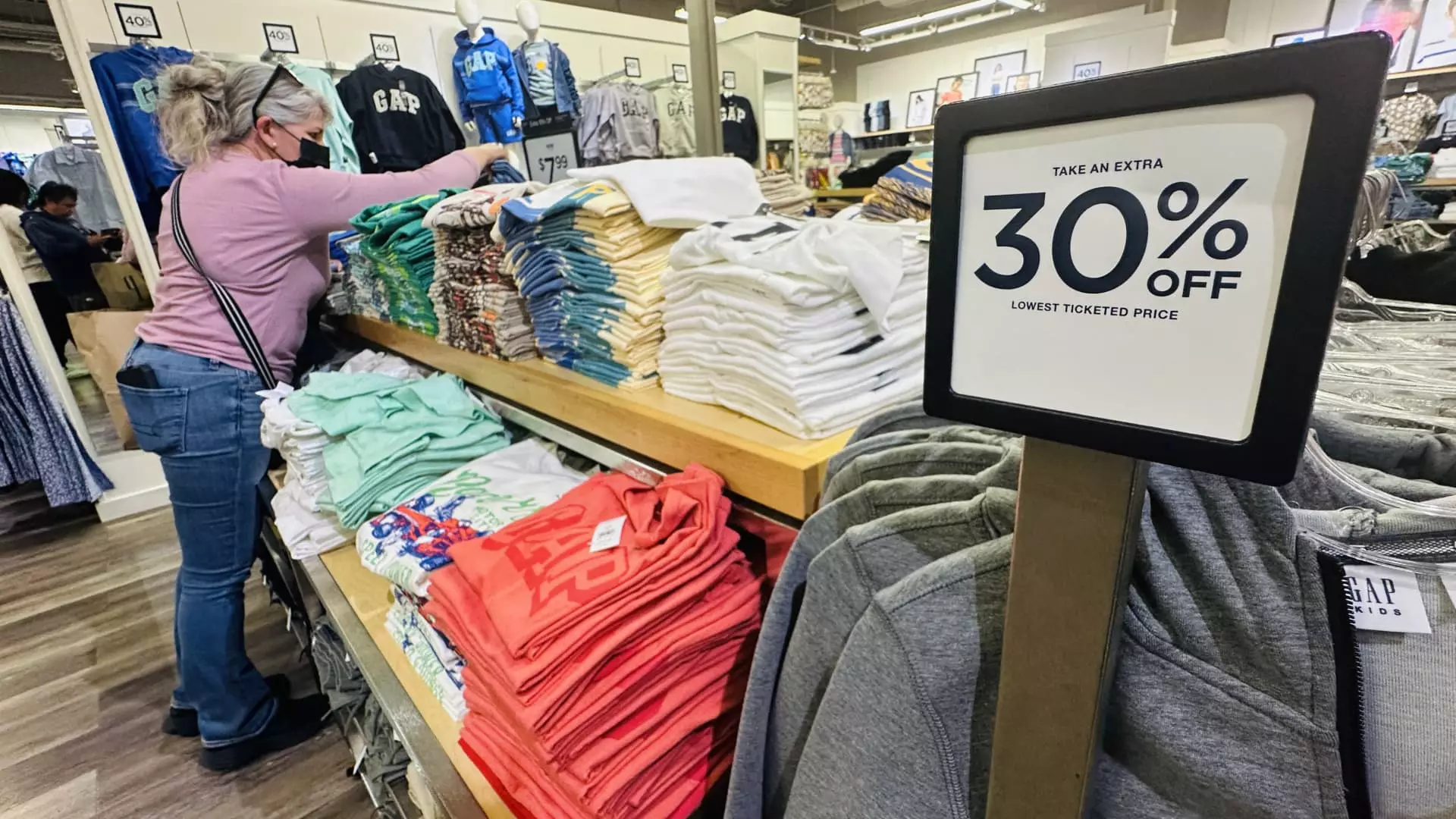The economic landscape in the United States is rapidly shifting, particularly in the realm of consumer goods like clothing and footwear. With a new wave of tariffs being implemented by the current administration, experts are projecting dramatic price increases that could lead to a staggering 64% spike in apparel costs by 2025. This situation is not merely an abstract economic statistic; it’s a potential crisis that disproportionately affects low- and middle-class families. It’s essential to understand the implications of these tariffs beyond the economic jargon; they threaten to unravel the very fabric of American consumer culture.
The Real Cost of Tariffs
While a trade war may be painted in lofty terms as a necessary stand against unfair practices from countries like China, the reality is far less glamorous. Import tariffs are effectively a hidden tax that American consumers will bear directly. As stated by David French, executive vice president of the National Retail Federation, these tariffs are “a tax paid by the U.S. importer that will be passed along to the end consumer.” This reveals the hard truth: the burden falls squarely on the shoulders of everyday Americans who are already grappling with inflation on essential goods.
The notion that this will merely result in higher prices on luxury items is misguided. It will likely cascade through the supply chain, impacting not just high-end brands but everyday apparel that the average family relies on. Research suggests that as prices rise, consumers have begun to alter their shopping habits, with many engaging in “trade-down” behavior by opting for more affordable or secondhand alternatives. This not only underscores the economic stress families are facing; it also reflects a cultural shift that may redefine consumerism in America.
The Erosion of Trust in Quality
Interestingly, as tariffs push consumers towards cheaper alternatives, a byproduct of this forced normalization of lower-quality goods may arise. Historically, when genuine products become too expensive, counterfeit goods flood the market, filling the gap and exploiting the vulnerable. Experts warn that this could create an environment ripe for counterfeiters, especially since quality assurance processes might become compromised as businesses scramble to adapt to higher costs.
Vidyuth Srinivasan, co-founder of Entrupy, highlights this cascading failure of consumer trust: “When one route is blocked, counterfeiters will adapt.” This raises the ethical question of consumer safety versus affordability. Just as consumers find themselves cornered financially, they could inadvertently support a burgeoning underground economy that compromises quality and authenticity.
Secondhand Market: A Double-Edged Sword
An unexpected silver lining to these punitive tariffs is the growth of the secondhand market, which is projected to explode over the coming years. As people become increasingly price-sensitive, avenues for accessing affordable yet quality goods will gain traction. Reports suggest that the resale market could increase by 55%, reaching an astounding $291.6 billion by 2029. This shift is significant, particularly among younger generations who are already gravitating toward eco-conscious consumerism.
However, the secondhand market is not a panacea; it comes with challenges of its own. Not only does it face supply constraints, but businesses in this space need to ensure that they maintain ethical practices, ensuring that the surge in demand does not lead to exploitative conditions for workers in thrift shops or e-commerce platforms. The clash between profitability and ethics has never been more pronounced, calling for a critical examination of sustainable practices in reselling.
The Uncertain Future of Apparel and Trade
Amidst this chaos, the apparel industry stands on a precipice, uncertain about how future trade agreements will unfold. Julia Hughes, president of the United States Fashion Industry Association, expresses concern, stating, “The chaos is still rippling through.” With back-to-school season around the corner—a crucial time for the retail market—the stakes have never been higher.
As consumers adjust to changing prices and seek alternatives, the very essence of American consumer culture is at risk of transformative change. A fundamental question looms: Will functional, affordable clothing become a relic of the past, replaced by a culture that opts for secondhand and counterfeit items as the new normal? The answer could very well dictate not only the fate of consumers but also the cultural identity of American shopping for years to come.
In this delicate dance of economics and consumer behavior, it is evident that policy decisions have real and lasting ramifications. The intertwined nature of trade and individual lives underscores the need for thoughtful deliberation in crafting future trade policies, ensuring that progress benefits rather than burdens the average American.

